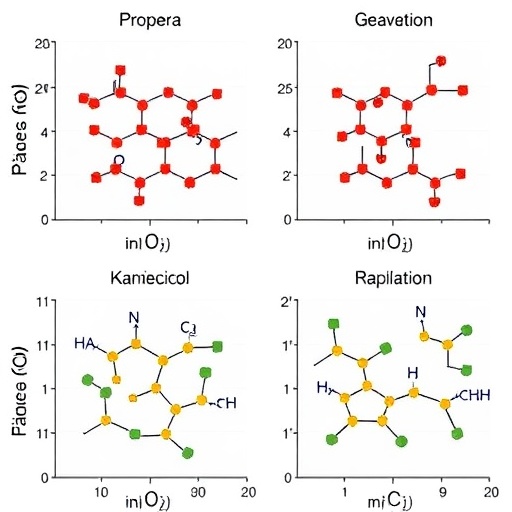Propene, a crucial petrochemical, is at the forefront of current chemical processes due to its extensive use in manufacturing polypropylene and various solvents and alcohols. As the global demand for propene continues to rise, so does the need to enhance production methods, particularly through efficient non-oxidative dehydrogenation of propane (PDH). The PDH process has recently gained traction as an alternative pathway owing to the shale gas revolution, which has brought about a significant increase in the availability of propane. The importance of developing a more environmentally friendly, cost-effective catalytic process is more urgent than ever.
Traditionally, the conversion of propane to propene has relied on expensive catalysts that contain precious metals such as platinum or chromium. These metals, while effective, contribute to high operational costs and have negative environmental impacts. In light of this, cobalt-based catalysts have emerged as a promising alternative. Cobalt not only provides superior catalytic activity but also possesses the capacity to selectively activate carbon-hydrogen (C-H) bonds in propane and other alkanes.
Despite the advantages of cobalt-based catalysts, the mechanisms behind the dehydrogenation of propane remain a subject of intense debate among chemists. The nature of the active species involved—whether it’s Co0, Co2+, or Co3O4—has generated significant discussion in the literature. One prevailing theory suggests that the isolated Co2+Ox species present on the surfaces of supports like silica or zeolites are primarily responsible for facilitating the PDH reaction. Conversely, metallic Co0 species are believed to catalyze the cracking of propane, leading to the formation of undesirable by-products rather than the desired propene.
Nonetheless, compelling evidence suggests that well-dispersed Co0 species formed in situ from CoOx can selectively dehydrogenate propane to propene under the right conditions. This transformational approach counts on the effective management of catalyst morphology and the operational environment to control the catalytic activity and selectivity towards desired products. The challenge remains to elucidate the conditions that favor the formation of active Co0 sites while suppressing parallel reactions that lead to carbon deposition and methane production.
Recent studies led by Professor Evgenii V. Kondratenko from the Leibniz Institute for Catalysis in Germany shed new light on this critical aspect of catalytic science. Conducting research on cobalt oxide (CoOx) species supported on silicalite-1 zeolite, their findings reveal the dynamic behavior of these species under reaction conditions. The restructuring and transformation of CoOx during the dehydrogenation process are pivotal in understanding how selectivity can be controlled in PDH reactions.
The team discovered that the lattice oxygen of oxidized CoOx serves a dual purpose: it oxidizes propane not just to propene but also to carbon oxides. Interestingly, larger CoOx species tend to favor the latter reaction pathway, which is less desirable in propene production. This oxidation process typically occurs rapidly during the initial seconds of propane exposure under PDH conditions, which can detract from overall selectivity and yield.
As CoOx is reduced to form Co0 species during the reaction, it becomes critical to optimize these active sites to favor propene production. Research indicates that small Co0 particles, if covered with a carbon-containing layer, can mitigate deep dehydrogenation and cracking reactions, thus enhancing selectivity for propene. This observation has profound implications for catalyst design, as it suggests that controlling the surface chemistry of Co0 could drastically improve the efficiency of the PDH process.
In summary, the work conducted at the Leibniz Institute marks a significant advancement in the field of catalysis, particularly in refining the mechanisms of the PDH process. The ability to manipulate the structure of CoOx species to favor propene formation could potentially revolutionize the landscape of propene production, making it both economically viable and environmentally sustainable. This research was published in the esteemed Chinese Journal of Catalysis, where it joins a growing body of literature aiming to redefine catalysis in the context of modern chemical engineering challenges.
The overarching goal in advancing these catalytic systems is to create methodologies that are not only cost-efficient but also minimize ecological footprints. As global industries strive toward more sustainable practices, the ongoing research into cobalt-based catalysts for PDH continues to be a promising field, combining practical applications with fundamental scientific inquiry.
By emphasizing the importance of selectivity control through the innovative management of catalyst morphology, the research community can lay the groundwork for the development of next-generation catalysts. This evolution in catalyst science may ultimately lead to transformative practices in the production of valuable petrochemicals, aligning industrial processes with the pressing needs of environmental stewardship.
As the world continues to navigate the challenges of resource management and sustainable chemical production, pioneering investigations into cobalt catalysts for propane dehydrogenation will undoubtedly play a critical role in shaping future practices in the chemical industry.
Subject of Research: Cobalt-based catalysts for propene production
Article Title: Understanding the reaction-induced restructuring of CoOx species in silicalite-1 to control selectivity in non-oxidative dehydrogenation of propane
News Publication Date: 24-Jul-2025
Web References: Chinese Journal of Catalysis
References: None
Image Credits: Credit: Chinese Journal of Catalysis
Keywords
Applied sciences and engineering





